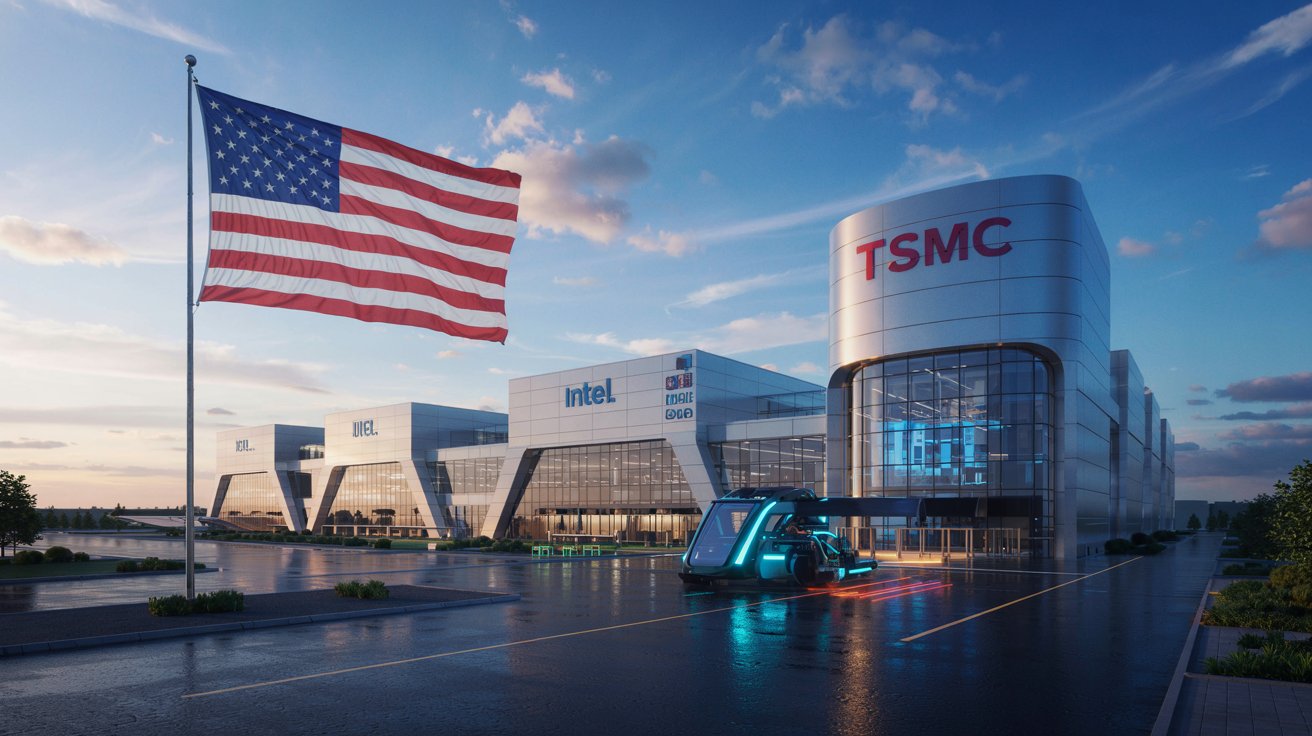Intel and TSMC’s groundbreaking chip manufacturing venture will reshape America’s tech future by turning the U.S. into a global semiconductor powerhouse. With rising global tensions and supply chain vulnerabilities, this alliance directly supports American innovation, security, and economic strength. Here’s everything U.S. readers—and global tech enthusiasts—need to know.
What Is the Intel-TSMC Chip Manufacturing Venture?
Intel and Taiwan Semiconductor Manufacturing Company (TSMC) have joined forces to build advanced chip fabrication plants in the U.S., aiming to mass-produce next-gen processors by 2026. The partnership combines Intel’s cutting-edge chip design with TSMC’s world-leading manufacturing expertise.
This deal helps shift chip production away from Asia and creates a reliable U.S.-based tech manufacturing hub.
Why It Matters for America’s Tech Independence
Today, over 90% of the world’s most advanced chips are made in Taiwan, putting the U.S. at risk during global conflicts or trade disruptions. This venture drastically reduces that risk by bringing chip-making capabilities home.
Global Chip Dependency vs. U.S. Manufacturing Revival
| Factor | Before the Venture | Post Intel-TSMC Collaboration (Est. 2026) |
|---|---|---|
| U.S. share of global chip output | 12% | 20–25% |
| Advanced chip nodes (2nm or less) | Mostly Asia (90%+) | U.S. to enter production pipeline |
| Supply chain risk | High due to Taiwan reliance | Reduced via local fabs |
| U.S. government investment | $52B via CHIPS Act | Intel-TSMC among top recipients |
| Job creation | ~2,000 tech jobs | Over 6,000 high-paying U.S. jobs |
America regains control of its chip supply while creating thousands of jobs and reinforcing its tech leadership.
What Are the Strategic Goals Behind the Deal?
This isn’t just about manufacturing—it’s a strategic reset of the global tech ecosystem. Here’s what Intel and TSMC aim to achieve:
- Faster innovation through joint R&D on 2nm and below chips
- Secure defense and AI infrastructure made in the U.S.
- Reduced geopolitical risk with fewer overseas dependencies
- Economic uplift through local job creation and investment
Focus Keyword: advanced semiconductor production
U.S. Government Support & National Security Interests
The U.S. government is all in. Through the CHIPS and Science Act, over $50 billion is being invested in chipmaking to ensure America leads in defense tech, AI, and 5G. Intel and TSMC are set to receive a significant portion of that funding.
In a statement, the U.S. Commerce Department confirmed that chip security is now seen as “essential to national security.”
Real-World Impact on American Tech and Economy
This collaboration will power everything from AI supercomputers to electric vehicles, military drones, and data centers—products that impact the daily lives of millions of Americans.
- The U.S. semiconductor market is projected to hit $350 billion by 2030
- AI chip demand will grow 35% year-over-year, according to Deloitte
- Electric vehicles require 3–4x more chips than gas-powered cars
Strategic Value of the Intel-TSMC Venture
[Intel-TSMC Joint Venture]
|
|-- [ U.S. Job Creation ]
|-- [ Advanced Chip R&D ]
|-- [ National Security ]
|-- [ Supply Chain Resilience ]
|-- [ AI and Defense Boost ]✅ Final Thoughts: Why This Venture Will Redefine America’s Tech Future
Intel and TSMC’s joint venture marks a defining moment for American innovation. By reshoring chip production, the U.S. isn’t just future-proofing its tech economy—it’s taking the lead in an industry critical to everything from AI to national defense.
This strategic collaboration promises to bring:
- Jobs
- Innovation
- Security
- And long-term economic strength back to America.
With an expected 20–25% global chip output share by 2026, the U.S. is on the path to semiconductor leadership once again.
[USnewsSphere.com / reu.]





